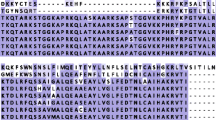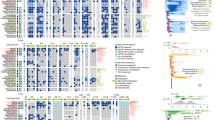Abstract
The study of histone evolution has experienced a rebirth, for two main reasons: the identification of new essential histone variants responsible for regulating chromatin dynamics and the subsequent contradictions posed by this variability as it pertains to their long-term evolution process. Although different evolutionary models (e.g., birth-and-death evolution, concerted evolution) may account for the observed divergence of histone genes, conclusive evidence is lacking (e.g., histone H1) or totally nonexistent (e.g., histone H2A). While most of the published work has focused on deuterostomes, very little is known about the diversification and functional differentiation mechanisms followed by histone protein subtypes in protostomes, for which histone variants have only been recently described. In this study, we identify linker and core histone genes in three clam species. Our results demonstrate the prevalence of an ‘orphon’ H1 lineage in molluscs, a group in which the protostome H1 and sperm nuclear basic proteins are on the verge of diversification. They share an early monophyletic origin with vertebrate-specific variants prior to the differentiation between protostomes and deuterostomes. Given the intringuing evolutionary features of the histone H1 family, we have evaluated the relative importance of gene conversion, point mutation, and selection in maintaining the diversity found among H2A subtypes in eukaryotes. We show evidence for the first time that the long-term evolution of this family is not subject to concerted evolution but, rather, to a gradual evolution following a birth-and-death model under a strong purifying selection at the protein level.







Similar content being viewed by others
References
Albig W, Kioschis P, Poutska A, Meergans T, Doenecke D (1997) Human histone gene organization: non-regular arrangement within a large cluster. Genomics 40:314–322
Altschul SF, Gish W, Miller W, Myers EW, Lipman DJ (1990) Basic local alignment search tool. J Mol Biol 215:403–410
Arents G, Moudrianakis E (1995) The histone fold: a ubiquitous architectural motif utilized in DNA compaction and protein dimerization. Proc Natl Acad Sci USA 92:11170–11174
Ausió J (1986) Structural variability and compositional homology of the protamine-like components of the sperm from the bivalve molluscs. Comp Biochem Physiol 85B:439–449
Ausió J (2006) Histone variants: the structure behind the function. Brief Funct Genom Proteomic 5:228–243
Barzotti R, Pelliccia F, Bucchiarelli E, Rocchini A (2000) Organization, nucleotide sequence, and chromosomal mapping of a tandemly repeated unit containing the four core histone genes and a 5S rRNA gene in an isopod crustacean species. Genome 43:341–345
Chadwick BP, Willard HF (2001a) A novel chromatin protein, distantly related to histone H2A, is largely excluded from the inactive X chromosome. J Cell Biol 152:375–384
Chadwick BP, Willard HF (2001b) Histone H2A variants and the inactive X chromosome: identification of a second macroH2A variant. Hum Mol Genet 10:1101–1113
Cheng G, Nandi A, Clerk S, Skoultchi AI (1989) Different 3′-end processing produces two independently regulated mRNAs from a single H1 histone gene. Proc Natl Acad Sci USA 86:7002–7006
Cho H, Wolffe AP (1994) Xenopus laevis B4, an intron-containing oocyte-specific linker histone-encoding gene. Gene 143:233–238
Collart D, Pockwinse S, Lian JB, Stein JL, Stein GS, Romain PL, Pilapil S, Heubner K, Cannizzaro LA, Croce CM (1992) A human histone H2B.1 variant gene, located on chromosome 1, utilizes alternative 3 end processing. J Cell Biochem 50:374–385
Connor W, Mezquita J, Winkfein RJ, States JC, Dixon GH (1984) Organization of the histone genes in the rainbow trout (Salmo gairdnerii). J Mol Evol 20:272–285
del Gaudio N, Potenza N, Stefanoni P, Chiusano ML, Geraci G (1998) Organization and nucleotide sequence of the cluster of five histone genes in the polichaete worm Chaetopterus variopedatus: first record of a H1 histone gene in the phylum annelida. J Mol Evol 46:64–73
Dryhurst DD, Thambirajah AA, Ausió J (2004) New twists on H2A.Z: a histone variant with a controversial structural and functional past. Biochem Cell Biol 82:490–497
Eirín-López JM, Ausió J (2007) H2A.Z-mediated genome-wide chromatin specialization. Curr Genom 8:59–66
Eirín-López JM, González-Tizón AM, Martínez A, Méndez J (2002) Molecular and evolutionary analysis of mussel histone genes (Mytilus spp.): possible evidence of an “orphon origin” for H1 histone genes. J Mol Evol 55:272–283
Eirín-López JM, González-Tizón AM, Martínez A, Méndez J (2004a) Birth-and-death evolution with strong purifying selection in the histone H1 multigene family and the origin of orphon H1 genes. Mol Biol Evol 21:1992–2003
Eirín-López JM, Ruiz MF, González-Tizón AM, Martínez A, Sánchez L, Méndez J (2004b) Molecular evolutionary characterization of the mussel Mytilus histone multigene family: first record of a tandemly repeated unit of five histone genes containing an H1 subtype with “orphon” features. J Mol Evol 58:131–144
Eirín-López JM, Ruiz MF, González-Tizón AM, Martínez A, Ausió J, Sánchez L, Méndez J (2005) Common evolutionary origin and birth-and-death process in the replication-independent histone H1 isoforms from vertebrate and invertebrate genomes. J Mol Evol 61:398–407
Eirín-López JM, Frehlick LJ, Ausió J (2006a) Protamines, in the footsteps of linker histone evolution. J Biol Chem 281:1–4
Eirín-López JM, Lewis JD, Howe L, Ausió J (2006b) Common phylogenetic origin of protamine-like (PL) proteins and histone H1: evidence from bivalve PL genes. Mol Biol Evol 23:1304–1317
Eirín-López JM, Ishibashi T, Ausió J (2007) H2A.Bbd: a quickly evolving hypervariable mammalian histone that destabilizes nucleosomes in an acetylation-independent way. FASEB J 22:316–326
Felsenstein J (1985) Confidence limits on phylogenies: an approach using the bootstrap. Evol Int J Org Evol 39:783–791
Fernandez-Tajes J, Gaspar M, Martinez-Patino D, McDonough N, Roberts D, González-Tizón AM, Martinez-Lage A, Mendez J (2007) Genetic variation of the razor clam Ensis siliqua (Jeffreys, 1875) along the European coast based on random amplified polymorphic DNA markers. Aquat Res 38:1205–1212
Gendron N, Dumont M, Gagné M-F, Lemaire S (1998) Poly A-containing histone H4 mRNA variant (H4-v.1): isolation and sequence determination from bovine adrenal medulla. Biochim Biophys Acta 1396:32–38
Hall TA (1999) BioEdit: a user-friendly biological sequence alignment editor and analysis program for Windows 95/98/NT. Nucleic Acids Symp Ser 41:95–98
Hentschel CC, Birnstiel ML (1981) The organization and expression of histone gene families. Cell 25:301–313
Kasinsky HE, Lewis JD, Dacks JB, Ausió J (2001) Origin of H1 histones. FASEB J 15:34–42
Kumar S, Tamura K, Nei M (2004) MEGA3: Integrated software for Molecular Evolutionary Genetics Analysis and sequence alignment. Brief Bioinform 5:150–163
Li WH (1997) Molecular Evolution. Sinauer, Sunderland, MA
Li A, Eirín-López JM, Ausió J (2005) H2AX: tailoring histone H2A for chromatin-dependent genomic integrity. Biochem Cell Biol 83:505–515
Malik HS, Henikoff S (2003) Phylogenomics of the nucleosome. Nat Struct Biol 10:882–891
Marino-Ramirez L, Hsu B, Baxevanis AD, Landsman D (2006) The Histone Database: a comprehensive resource for histones and histone fold-containing proteins. Proteins 62:838–842
Martianov I, Brancorini S, Catena R, Gansmuller A, Kotaja N, Parvinen M, Sassone-Corsi P, Davidson I (2005) Polar nuclear localization of H1T2, a histone H1 variant, required for spermatid elongation and DNA condensation during spermiogenesis. Proc Natl Acad Sci USA 102:2808–2813
Marzluff WF (1992) Histone 3′ ends: essential and regulatory functions. Gene Expr 2:93–97
Maxson R, Cohn R, Kedes L, Mohun T (1983) Expression and organization of histone genes. Annu Rev Genet 17:239–277
Nei M (1987) Molecular evolutionary genetics. Columbia University Press, New York
Nei M, Hughes AL (1992) Balanced polymorphism and evolution by the birth-and-death process in the MHC loci. In: Tsuji K, Aizawa M, Sasazuki T (eds) 11th Histocompatibility Workshop and Conference. Oxford University Press, Oxford, pp 27–38
Nei M, Kumar S (2000) Molecular evolution and phylogenetics. Oxford University Press, New York
Nei M, Rooney AP (2006) Concerted and birth-and-death evolution in multigene families. Annu Rev Genet 39:121–152
Nei M, Rogozin IB, Piontkivska H (2000) Purifying selection and birth-and-death evolution in the ubiquitin gene family. Proc Natl Acad Sci USA 97:10866–10871
Ota T, Nei M (1994) Divergent evolution and evolution by the birth-and-death process in the immunoglobulin VH gene family. Mol Biol Evol 11:469–482
Peretti M, Khochbin S (1997) The evolution of the differentiation-specific histone H1 gene basal promoter. J Mol Evol 44:128–134
Piontkivska H, Rooney AP, Nei M (2002) Purifying selection and birth-and-death evolution in the histone H4 gene family. Mol Biol Evol 19:689–697
Ponte I, Vidal-Taboada JM, Suau P (1998) Evolution of the vertebrate H1 histone class: evidence for the functional differentiation of the subtypes. Mol Biol Evol 15:702–708
Ramakrishnan V, Finch JT, Graziano V, Lee PL, Sweet RM (1993) Crystal structure of globular domain of histone H5 and its implications for nucleosome binding. Nature 362:219–223
Roger AJ, Svard SG, Tovar J, Clark CG, Smith MW, Gillin FD, Sogin ML (1998) A mitochondrial-like chaperonin 60 gene in Giardia lamblia: evidence that diplomonads once harbored an endosymbiont related to the progenitor of mitochondria. Proc Natl Acad Sci USA 95:229–234
Rooney AP (2003) Selection for highly biased amino acid frequency in the TolA cell envelope protein of proteobacteria. J Mol Evol 57:731–736
Rooney AP, Piontkivska H, Nei M (2002) Molecular evolution of the nontandemly repeated genes of the histone 3 multigene family. Mol Biol Evol 19:68–75
Rozas J, Sánchez-del Barrio JC, Messeguer X, Rozas P (2003) DnaSP, DNA polymorphism analyses by the coalescent and other methods. Bioinformatics 19:2496–2497
Rzhetsky A, Nei M (1992) A simple method for estimating and testing minimum-evolution trees. Mol Biol Evol 9:945–967
Saitou N, Nei M (1987) The neighbor-joining method: a new method for reconstructing phylogenetic trees. Mol Biol Evol 4:406–425
Schulze E, Schulze B (1995) The vertebrate linker histones H1°, H5, and H1M are descendants of invertebrate “orphon” histone H1 genes. J Mol Evol 41:833–840
Simpson RT (1978) Structure of chromatosome, a chromatin particle containing 160 base pairs of DNA and all the histones. Biochemistry 17:5524–5531
Sitnikova T (1996) Bootstrap method of interior-branch test for phylogenetic trees. Mol Biol Evol 13:605–611
Sitnikova T, Rzhetsky A, Nei M (1995) Interior-branch and bootstrap tests of phylogenetic trees. Mol Biol Evol 12:319–333
Sures I, Levy S, Kedes L (1980) Leader sequences of Strongylocentrotus purpuratus mRNAs start at a unique heptanucleotide common to all five histone genes. Proc Natl Acad Sci USA 77:1265–1269
Thatcher TH, Gorovsky MA (1994) Phylogenetic analysis of the core histones H2A, H2B, H3, and H4. Nucleic Acids Res 22:174–179
Thompson JD, Gibson TJ, Plewniak F, Jeanmougin F, Higgins DG (1997) The CLUSTAL_X windows interface: flexible strategies for multiple sequence alignment aided by quality analysis tools. Nucleic Acids Res 25:4876–4882
van Holde KE (1988) Chromatin. Springer-Verlag, New York
van Wijnen AJ, van Den Ent FMI, Lian JB, Stein JL, Stein GS (1992) Overlapping and CpG methylation-sensitive protein-DNA interaction at the histone H4 transcriptional cell cycle domain: distinctions between two human H4 gene promoters. Mol Cell Biol 12:3273–3287
Wolffe AP, Khochbin S, Dimitrov S (1997) What do linker histones do in chromatin? Bioessays 19:249–255
Yan W, Lang M, Burns KH, Matzuk MM (2003) HILS1 is a spermatid-specific linker histone H1-like protein implicated in chromatin remodeling during mammalian spermiognesis. Proc Natl Acad Sci USA 100:10546–10551
Zhang J, Rosenberg HF, Nei M (1998) Positive Darwinian selection after gene duplication in primate ribonuclease genes. Proc Natl Acad Sci USA 95:3708–3713
Acknowledgments
We thank Martin Kreitman, Shozo Yokoyama, and two anonymous reviewers for insightful comments and suggestions on the early version of the manuscript. We are also very thankful to Anita Thambirajah for carefully reading the manuscript and for suggestions. This work was supported by Grants from the Xunta de Galicia (PGIDIT 06RMA50101PR) and the Spanish Ministry of Education and Science within the I3 Program (to J.M.), Canadian Institutes of Health Research (CIHR) Grant MOP 57718 (to J.A.), and a Postdoctoral Marie Curie International Fellowship within the 6th European Community Framework Programme (to J.M.E.-L). R.G.-R. was supported by a doctoral fellowship from the Universidade da Coruña.
Author information
Authors and Affiliations
Corresponding author
Electronic supplementary material
Below is the link to the electronic supplementary material.
Rights and permissions
About this article
Cite this article
González-Romero, R., Ausió, J., Méndez, J. et al. Early Evolution of Histone Genes: Prevalence of an ‘Orphon’ H1 Lineage in Protostomes and Birth-and-Death Process in the H2A Family. J Mol Evol 66, 505–518 (2008). https://doi.org/10.1007/s00239-008-9109-1
Received:
Revised:
Accepted:
Published:
Issue Date:
DOI: https://doi.org/10.1007/s00239-008-9109-1




